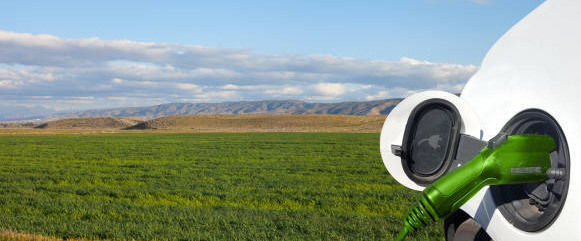March 17, 2025
Author: Tayna LaPierre

Last week, I attended the 2025 CACASA Computer Users Conference in Stockton, CA. At first glance, you might wonder—what does an agricultural commissioners’ event have to do with EV charging? Quite a lot, it turns out.
In California, agricultural commissioners and sealers have been protecting consumers for over a century, making sure everything from farm scales to fuel pumps are accurate and fair. Their legacy is one of precision, transparency, and public trust—values that are just as critical in today’s emerging electric vehicle (EV) charging infrastructure.
As TESCO Metering’s EVSE Product Manager, I was invited to speak about accuracy and compliance in EVSE testing, and I left the conference with a fresh perspective on how interconnected our industries really are.
Accurate Measurement Has Always Mattered
For over 100 years, agricultural commissioners have been guardians of fairness in commerce—whether it’s weighing produce at a farmers’ market or making sure a gas pump dispenses exactly a gallon. As we shift from fossil fuels to kilowatt-hours, that same expectation of fairness is driving a new era of regulation.
As of January 1, 2025, NIST Handbook 44 requires stricter accuracy standards for EV chargers nationwide. Meanwhile, California’s EPO 52 and CTEP (California Type Evaluation Program) are leading the charge with even tighter requirements. Under these standards, DC fast chargers must achieve accuracy within ±2%, ensuring that EV drivers pay for exactly what they get—no more, no less.
At CACASA, I was reminded that precision in measurement isn’t new. What’s new is applying that same rigor to a technology that’s evolving by the day.
Lessons from the Field: Pre-Installation Testing
One discussion I had with a group of county sealers stood out. They were quick to point out that catching an error before it hits the field is always cheaper—and less painful—than dealing with a compliance failure after the fact. Whether it’s scales in a packing shed or meters on a DC fast charger, it’s the same story.
At TESCO Metering, we’ve seen what happens when EV chargers get red-tagged after installation—operators lose revenue, and reputations take a hit. Our T4350 and PL4150 test systems are designed to help manufacturers and network operators avoid that fate through pre-installation testing. By verifying chargers before they’re deployed, we ensure they meet NIST and California accuracy standards from day one.
It’s not just about compliance. It’s about delivering trust to the consumer at every stop on their charging journey.
Innovation Spotlight: Utility Pole Chargers
Speaking of journeys—Connecticut is doing something innovative that caught my attention. They’re turning utility poles into EV charging stations through an 18-month pilot project led by Voltpost. This model reduces the cost and complexity of charger installation, especially in dense urban environments. Imagine the impact if we paired this kind of rollout with rigorous pre-installation accuracy testing from the start.
As we expand the charger network, especially with these creative deployments, accuracy testing will be critical. Consumers won’t tolerate uncertainty, whether they’re charging at a highway rest stop or a neighborhood utility pole.
Building the Future of Trust
At CACASA, it became clear that whether you’re in agriculture or EV charging, trust is built on accurate measurement and transparency. As we ramp up to meet 2025’s regulatory requirements, we’re not just building chargers—we’re building consumer confidence in a new energy economy.
It’s exciting to be part of that future. But like any good harvest, it depends on doing the hard work early: investing in testing, focusing on compliance, and committing to fairness in every transaction.
Let’s keep the conversation going. If you’re building a charger network or preparing for upcoming regulations, I’d love to connect.


0 Comments